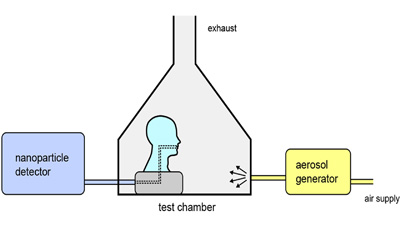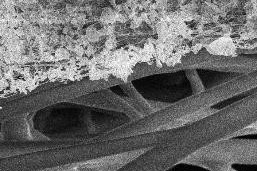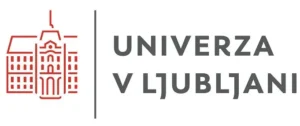News
Theses and mentoring
1. Urška Gradišar Centa, Polymer nanocomposites based on biocompatible polymers and molybdenum oxide nanowires: doctoral dissertation, Ljubljana, 2021 (mentor Maja Remškar).
2. Apparao Gudimalla, Chirality and nanoparticles enforced stabilization of topological defects in liquid crystals: doctoral dissertation, Ljubljana, 2021 (mentor Samo Kralj; co-mentors Sabu Thomas, Brigita Rožič).
3. Saša Harkai, Reconfigurable networks of nematic topological defects: doctoral dissertation, Ljubljana, 2021 (mentor Samo Kralj).
4. Neelakandan Marath Santhosh, Plasma‐enabled design of hybrid carbon nanostructures for energy storage applications: doctoral dissertation, Ljubljana, 2021 (mentor Uroš Cvelbar; co-mentor Gregor Filipič).
5. Urban Mur, Photonic modes in anisotropic topological soft matter: doctoral dissertation, Ljubljana, 2021 (mentor Miha Ravnik).
6. Marion Antonia van Midden, Scanning tunneling spectroscopy of correlated electron materials and molecular structures: doctoral dissertation, Ljubljana, 2021 (mentor Miha Škarabot; co-mentor Erik Zupanič).

FPPT research at JSI
Since March 2020, the researchers at “Jožef Stefan” Institute have been researching protective masks, which have turned out to be one of the key protective measures against the COVID-19 pandemic, as they reduce the aerosol viral transmissions. “Jožef Stefan” Institute researchers Anja Pogačnik Krajnc, Luka Pirker, Urška Gradišar Centa, Anton Gradišek, Igor B. Mekjavić and Maja Remškar in collaboration with other partners have recently published the article Size- and Time-Dependent Particle Removal Efficiency of Face Masks and Improvised Respiratory Protection Equipment Used during the COVID-19 Pandemic in the Sensors journal. The studied the efficiency of aerosol particle filtration for different types of masks, including masks that are categorized as PPT, as well as improvised masks, such as fabric masks, modified diving masks and modified gas masks. When it comes to different fabrics, poplin masks performed better than tetra fabrics. JSI researchers observed filtration of particles in the size order 10 to 570 nm, including the efficiency through time. These information is helps both the general public and the decision-makers in this fight against the pandemic.
Izvirni znanstveni članki – 2020
1. Geonhyeong Park, Simon Čopar, Ahram Suh, Minyong Yang, Uroš Tkalec, Dong Ki Yoon, “Periodic arrays of chiral domains generated from the self-assembly of micropatterned achiral lyotropic chromonic liquid crystal”, ACS central science, 2020, 6, 11, 1964-1970. [COBISS.SI-ID 28153859]
2. Aurelien Barbotin, Iztok Urbančič, Silvia Galiani, Christian Eggeling, Martin J. Booth, “Background reduction in STED-FCS using a bi-vortex phase mask”, ACS photonics, 2020, 7, 7, 1742-1753. [COBISS.SI-ID 19322371]
3. Abdou Hassanien, Biao Zhou, Akiko Kobayashi, “Spontaneous antiferromagnetic ordering in a single layer of organic superconductor”, Advanced electronic materials, 2020, 6, 10, 2000461. [COBISS.SI-ID 28479235]
4. Rijeesh Kizhakidathazhath, Yong Geng, Venkata Subba R. Jampani, Cyrine Charni, Anshul Sharma, Jan P. F. Lagerwall, “Facile anisotropic deswelling method for realizing large-area cholesteric liquid crystal elastomers with uniform structural color and broad-range mechanochromic response”, Advanced functional materials, 2020, 30, 7, 1909537. [COBISS.SI-ID 22337539]
5. Hana Kokot et al. (34 avtorjev), “Prediction of chronic inflammation for inhaled particles: the impact of material cycling and quarantining in the lung epithelium”, Advanced materials, 2020, 32, 47, 2003913. [COBISS.SI-ID 39713539]
6. Honey Dawn C. Alas, Thomas Müller, Kay Weinhold, Sascha Pfeifer, Kristina Glojek, Asta Gregorič, Griša Močnik, Luka Drinovec, Francesca Costabile, Martina Ristorini, A. Wiedensohler, “Performance of microAethalometers: real-world field intercomparisons from multiple mobile measurement campaigns in different atmospheric environments”, Aerosol and air quality research, 2020, 20, 12, 2640-2653.… Read the rest “Izvirni znanstveni članki – 2020”

Additional funding to research protective mask materials
At the 2020 ARRS call for additional funding related to COVID-19, the research program “Physics of soft matter, surfaces and nanostructures” (P1-0099, coordinator Slobodan Žumer) was successful with the proposal “Study of materials for protective respiratory face masks” prepared by Maja Remškar and Miha Ravnik. The additional 2-year funding of 2700 working hours per year will support research at IJS (two thirds) & UL FMF (one third) and collaboration with Marjan Ješelnik from the company smartMELAMINE.
Review articles
1. Zvonko Trontelj, Janez Pirnat, Vojko Jazbinšek, Janko Lužnik, Stanko Srčič, Zoran Lavrič, Samo Beguš, Tomaž Apih, Veselko Žagar, Janez Seliger, “Nuclear Quadrupole Resonance (NQR): a useful spectroscopic tool in pharmacy for the study of polymorphism”, Crystals, 2020, 10, 6, 450.
2. Pedro Campinho, Andrej Vilfan, Julien Vermot, “Blood flow forces in shaping the vascular system: a focus on endothelial cell behavior”, Frontiers in physiology, 2020, 11, 552.
3. Ema Valentina Brovč, Janez Mravljak, Roman Šink, Stane Pajk, “Rational design to biologics development: the polysorbates point of view”, International journal of pharmaceutics, 2020, 581, 119285
